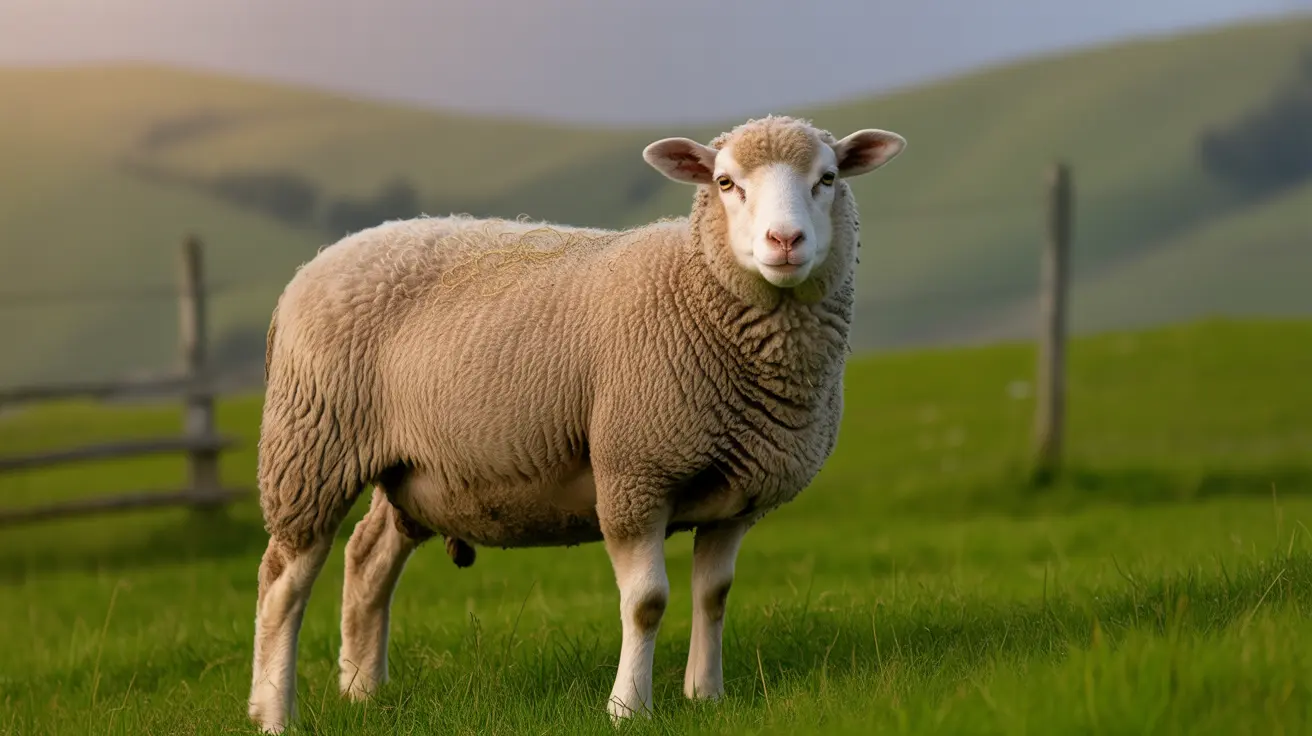When it comes to understanding our farm animals, we often overlook the subtle ways they communicate their comfort and distress. Sheep weather preferences reveal fascinating insights into animal cognition and welfare, challenging our assumptions about livestock intelligence. According to new research highlighted in Amelia Thomas' book, sheep demonstrate remarkable awareness of their environment and sophisticated responses to changing weather conditions.
This emerging understanding represents more than just academic curiosity—it's a call to listen more carefully to what animals are trying to tell us. As climate patterns shift and farming practices evolve, recognizing sheep welfare in cold weather and other environmental challenges becomes crucial for both ethical farming and productive livestock management.
Sheep Shelter Needs: When Animals Choose Protection
Contrary to popular belief, sheep are remarkably hardy animals that often prefer staying outdoors even in surprisingly cold conditions. Research shows sheep can comfortably remain outside in temperatures as low as –23°C (–9°F). However, their shelter-seeking behavior becomes more pronounced under specific adverse conditions.
Sheep actively seek shelter when facing high humidity levels exceeding 90%, extreme wind chill at or below 10°C (50°F), or when they're both cold and wet simultaneously. This behavioral pattern demonstrates their sophisticated understanding of environmental threats. Vulnerable individuals within the flock, particularly lambs and recently shorn sheep, show heightened sensitivity to weather changes and require earlier intervention.
Sheep Lambing Weather Impact on Survival and Growth
Weather conditions during lambing season create significant impacts on both lamb survival rates and overall flock productivity. Cold stress combined with increased rainfall creates challenging conditions that can reduce lamb health outcomes, while warmer daytime temperatures consistently improve survival rates across different farming systems.
The relationship between weather and sheep reproduction extends beyond immediate survival concerns. Seasonal weather patterns influence milk yield in ewes, affecting lamb growth rates and weaning weights. Understanding these connections helps farmers make more informed decisions about breeding schedules and protective measures during vulnerable periods.
Animal Sentience in Livestock: Recognizing Cognitive Abilities
Modern research reveals sheep possess remarkable cognitive abilities that challenge traditional assumptions about livestock intelligence. Studies demonstrate sheep can distinguish between individual human faces and remember specific flock mates, indicating sophisticated memory and recognition capabilities.
These findings support growing evidence of sheep cognitive abilities, showing they experience emotions and form social bonds. This emotional complexity manifests in their responses to weather conditions, where individual sheep may react differently based on their experiences, age, and physical condition.
Climate Change Effects on Sheep and Adaptive Farming
As global weather patterns shift, understanding sheep behavior in adverse weather becomes increasingly critical for sustainable farming. Temperature fluctuations and changing precipitation patterns impact sheep welfare and productivity worldwide, requiring adaptive management strategies.
Modern technology offers promising solutions for monitoring flock management and weather relationships. Sensors and machine learning systems can detect heat stress detection in sheep early, allowing farmers to implement protective measures before welfare issues develop. These technological advances support more compassionate sheep farming practices while maintaining productivity.
Understanding Sheep Vocalizations and Behavioral Signals
Listening to animal behavior involves interpreting multiple communication channels beyond obvious distress signals. Sheep communicate through vocalizations, body language, and movement patterns that indicate their comfort levels with current conditions.
Farmers practicing ethical livestock farming increasingly recognize the importance of reading these subtle signals. Changes in grazing patterns, flock clustering behavior, and individual sheep positioning within groups all provide valuable information about their environmental preferences and welfare status.
Frequently Asked Questions
- How do sheep respond to different weather conditions and when do they seek shelter?
Sheep generally prefer to stay outdoors even in cold temperatures down to –23°C but seek shelter in aversive conditions such as high humidity (>90%), very low wind chill (≤10°C), or when they are cold and wet, especially vulnerable individuals like lambs or freshly shorn sheep.
- What impact does weather have on the health and productivity of sheep, particularly during lambing?
Weather significantly affects lamb survival and growth; cold stress and increased rainfall can reduce lamb health, while warmer daytime temperatures improve survival rates. Seasonal weather also influences milk yield and reproductive performance in sheep.
- Why is it important to 'listen' to animals like sheep in terms of their behavior and welfare?
Listening to animals involves interpreting their behaviors, vocalizations, and preferences to understand their needs and emotions. This approach helps improve compassionate farming and animal welfare by acknowledging their sentience and reducing anthropocentric assumptions.
- How might climate change affect sheep farming and what adaptations are recommended?
Climate change alters temperature and weather patterns, impacting sheep welfare and productivity globally. Adaptations include using climate-smart management, providing flexible shelter, and employing technology like sensors and machine learning to detect heat stress and better support flock welfare.
- Can sheep recognize humans and remember social relationships, indicating a level of sentience?
Yes, research shows sheep can distinguish between human faces, remember individual flock mates, and exhibit emotional responses, highlighting their cognitive and emotional complexity as sentient animals.






